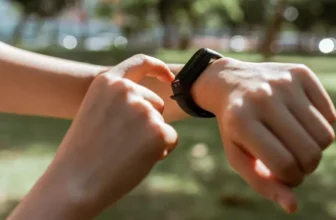
Have you ever wondered how exactly fitness trackers manage to calculate the calories you burn? The mechanisms behind these devices are quite fascinating. By combining innovative sensors with advanced algorithms, fitness trackers are able to provide you with detailed insights into your calorie expenditure during various activities. The way these trackers utilize heart rate monitoring and activity tracking algorithms is key to their accuracy. But how do they really do it? Let’s uncover the mystery behind how fitness trackers detect calories burned.
Sensors and Their Role
To accurately track calories burned, fitness trackers utilize sensors that measure your physical activity and body metrics. These sensors play a crucial role in providing accurate data about your movements and intensity levels throughout the day. By monitoring your steps, distance traveled, and even the intensity of your workouts, these sensors can calculate the amount of energy you expend, aiding in determining the calories burned.
The accelerometer sensor, for instance, tracks your movements in different directions, helping the tracker understand when you’re walking, running, or even climbing stairs. This information is then combined with data from other sensors, such as the gyroscope and altimeter, to paint a comprehensive picture of your activity levels.
Understanding how these sensors work together can give you a better insight into your calorie expenditure and overall fitness progress. So, next time you check your fitness tracker for calorie information, remember the intricate work these sensors do behind the scenes to provide you with valuable insights.
Heart Rate Monitoring
Fitness trackers measure your heart rate using optical sensors located on the underside of the device. These sensors emit light that penetrates your skin, allowing the device to detect blood volume changes in your capillaries as your heart beats. By analyzing these variations, the tracker can accurately determine your heart rate in real-time during exercise or at rest.
Heart rate monitoring is crucial for estimating the number of calories burned during physical activity. The tracker uses your heart rate data, along with other factors like age, weight, and gender, to calculate your calorie expenditure. The higher your heart rate during exercise, the more calories you’re likely burning. This information is valuable for individuals looking to track their fitness progress, set goals, and ensure they’re meeting their calorie burn targets.
Activity Tracking Algorithms
Activity tracking algorithms within fitness trackers analyze various data inputs to estimate your physical activity levels accurately. These algorithms consider factors such as your heart rate, movement patterns, and sometimes even GPS data to determine the type and intensity of your activity. By processing these inputs, the tracker can provide you with insights into the number of steps you’ve taken, the distance you’ve covered, and the calories you’ve burned during a particular workout or throughout the day.
The algorithms in fitness trackers are designed to differentiate between activities like walking, running, cycling, and even swimming, allowing for more precise tracking of your workouts. They can also account for variations in individual stride length or running cadence to offer personalized data. Additionally, some trackers use machine learning to improve the accuracy of their activity tracking over time, adapting to your specific movement patterns and behaviors.
Personal Information Integration
When integrating your personal information into fitness trackers, consider inputting accurate data to enhance the device’s effectiveness in tracking your physical activity levels. Inputting your age, weight, height, and gender helps the tracker provide more precise calculations regarding calories burned and distance covered. By accurately setting up your profile, the fitness tracker can better tailor its feedback and recommendations to help you achieve your fitness goals.
Moreover, integrating personal information allows the fitness tracker to customize your daily activity targets. Based on your profile data, the device can suggest appropriate workout intensities and durations. This personalized approach can motivate you to stay active and make progress towards improving your overall health.
Additionally, some fitness trackers offer features that sync with your dietary habits and sleep patterns. By inputting information about your meals and sleep quality, you can gain a more comprehensive overview of your health and wellness journey. This integration of personal data enables the device to provide holistic insights to support your fitness endeavors effectively.
Trending Products
























